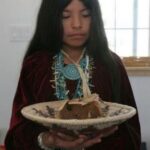Each culture has encompassed many unique traditions that we take into account when planning and performing of this union referred to as a wedding. The tradition of the exchanging of wedding rings has been said to originate in the Middle. In this article we will examine other traditions involved with a Middle Eastern wedding. Wedding rings are circular and endless to symbolize everlasting love; this strong tradition has been brought onto nearly every ceremony performed regardless of culture throughout the world. Although, it is in the Middle East that we find the oldest wedding traditions; the culture encompasses such history with traditions being passed on generations through generations.
Most often, there are five important aspects of the wedding celebration. These include;
§ The engagement party
§ The signing of the marriage contract
§. The bride and the groom, along with their friends and family gather together to well wish the new couple with time-honored food, drink and entertainment. These parties often last late into the evening and are filled with extraordinary dancing and singing traditions deep with rich cultural undertone and traditions.
Muslim marriage is conventionally considered to be a contract rather than a sacrament. The contract is considered to be the most important aspect of the ceremonial activities of marriage and in modern day is the signing of the marriage certificate. This marriage contract is binding, and outlines the rights that each party has in the marriage. This contract binding the man and the woman conveys the legal rights and obligations that each spouse has to the other. It is considered to be a civil agreement, entered into by the couple or those acting on behalf of the couple, for example the father of the bride. Traditionally, a verbal contract was made between the father of the bride, and the family of, and the groom.
The henna party is a party in which the bride is given tattoos with special ink marked on her hands and her feet. Warding off of evil spirits and ensuring the happiness of the new couple is the main purpose of this ceremony. Traditionally, a green dress is worn to the henna party by the bride. It is the option of those attending to get tattooed alongside the bride.
Each guest that attends the wedding reception is given five almonds at the reception. These five almonds signify the following sacred wedding wishes; health, happiness, wealth, fertility and longevity. The guests and the couple dance sing and rejoice with traditional food and entertainment long into the evening. Celebration is a theme that we see often in Middle Eastern ceremonial activities and especially weddings!
The wedding shower occurs seven days after the wedding and is accordingly named “Sabaa”, the Arabic word for seven. The bride and the female members of the family take part in this tradition that is usually held at the home of the mother of the groom. The bride is given gifts, gold or diamonds from the mother, and the female members of the family are able to bond.
The couple than enters on their journey into marriage, and learning and growing with each other in the traditions of the Middle East. This union has been a whirlwind of events in preparation for the life that they are to venture on together.


